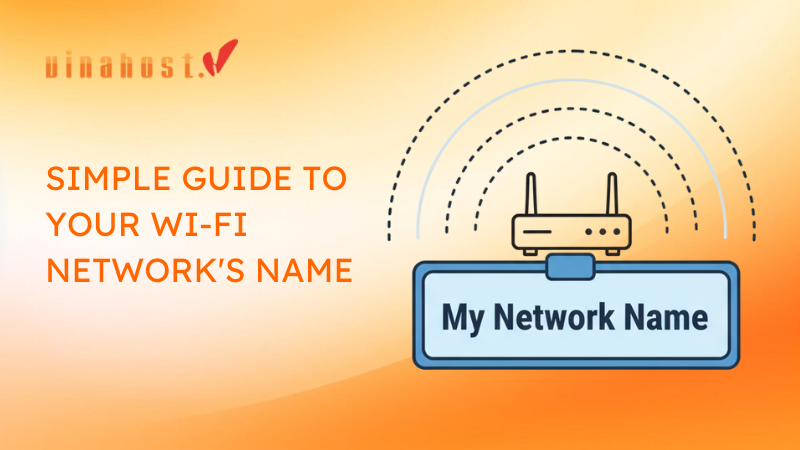In today’s digital landscape, where online presence is paramount, the value of domain names has surged to the forefront of discussions among entrepreneurs, marketers, and investors alike. A domain name serves as the virtual gateway to a brand, business, or individual on the internet, embodying not just an address but an identity and a promise. From the succinct elegance of a single-word .com to the targeted precision of a keyword-rich domain, each name carries its own unique potential and allure. Let’s find out through the following article of Vinahost.
1. What is domain value
Domain value refers to the worth or perceived value assigned to a domain name in the marketplace. This value can be influenced by a variety of factors, including but not limited to:
- Desirability: How desirable the domain name is to potential buyers or users. Desirability is often influenced by factors such as the length, memorability, brandability, relevance to a particular industry or keyword, and the extension (e.g., .com, .net, .org).
- Market Trends: Current market trends and demand can significantly impact the value of domain names. Domains related to emerging technologies, popular trends, or highly sought-after keywords may command higher prices due to increased demand.
- Historical Significance: Some domain names may have historical significance or previous ownership by well-known brands or websites, which can add to their the value of domain names.
- Development Potential: The potential for development or monetization of a domain name can affect value of domain names. Domains with clear potential for building a profitable website or those that are in demand among investors for resale purposes tend to have higher domain’s value.
- Legal Considerations: Legal factors, such as trademark disputes or potential legal challenges associated with a domain name, can impact domain’s value. Domains free from legal issues are generally more valuable.
- Comparable Sales: Comparable sales of similar domain names can provide insights into the potential value of domain. Analyzing past sales data of similar domains can help determine a fair market value.
- Perceived Brand Value: The perceived brand value associated with a domain name can influence its worth. A domain name that aligns well with a brand’s identity or conveys trustworthiness and credibility may be valued higher.

Also Read: What is Domain & How It Impacts Your Online Presence
2. Key Factors Influencing Domain Value
2.1. Domain Extension
Domain extension, also known as the top-level domain (TLD), is a critical factor influencing the value of a domain name. The choice of TLD can significantly impact how a domain is perceived and its market value. Here are the key factors related to domain extension that influence domain’s value:
- Popularity and Recognition: Certain TLDs, such as .com, .net, and .org, are widely recognized and preferred by users worldwide. Domains with these popular TLDs tend to have higher domain’s value due to their established credibility and familiarity.
- Global vs. Local Targeting: The choice of TLD can indicate whether a domain is targeting a global or local audience. Global TLDs like .com are suitable for businesses with international aspirations, while country-code TLDs (ccTLDs) like .uk or .de are more suitable for targeting specific geographic regions. The relevance of the TLD to the target audience affects the domain’s value.
- SEO Impact: While Google has stated that they treat all TLDs equally in terms of search rankings, there may still be some differences in user perception and click-through rates based on the TLD. For example, users may inherently trust .com domains more, leading to higher click-through rates and indirectly impacting SEO performance. Thus, the TLD can indirectly influence a domain’s value.
- Brand Image and Trust: Certain TLDs are associated with specific industries or organizations. For instance, .edu is reserved for educational institutions, .gov for government entities, and .org for nonprofits. Using an appropriate TLD can convey trust and credibility to users, enhancing the brand image and potentially increasing the domain’s value.
- Availability and Scarcity: The availability of desirable domain names within a particular TLD can affect domain’s value. TLDs with limited availability of short, memorable domain names may have higher demand and, consequently, higher domain’s value.
- Niche Relevance: Some industries or communities have specific TLDs associated with them. For example, .io is often associated with technology startups, .co with companies, and .me with personal websites. Choosing a TLD that aligns with the niche can enhance the domain’s relevance and perceived value within that community.
- Market Trends: Market trends and preferences can influence the domain’s value of certain TLDs over time. Newer TLDs, such as .ai (artificial intelligence) or .crypto (cryptocurrency), may gain popularity in response to emerging trends, potentially increasing their domain’s value in specific contexts.
2.2. Brandability
Brandability is a significant factor influencing the domain’s value. A brandable domain is one that is catchy, memorable, and has the potential to become a recognizable brand. Here are the key factors related to brandability that influence domain’s value:
- Memorability: A brandable domain name is easy to remember, pronounce, and spell. It should stick in the minds of users even after they’ve encountered it just once. Memorable domain names have higher domain’s value because they can lead to increased direct traffic and word-of-mouth referrals.
- Uniqueness: A brandable domain should stand out from the crowd and avoid generic or commonly used terms. Unique domain names are more likely to capture attention and differentiate the brand from competitors.
- Catchiness: Brandable domains often have a certain rhythm, flow, or sound that makes them catchy and appealing. They may include alliteration, rhyming, or playful word combinations that make them more engaging and memorable.
- Relevance: While being unique is important, a brandable domain should also be relevant to the brand or industry it represents. It should convey the essence or purpose of the business while leaving a lasting impression on users.
- Visual Appeal: Visual aspects such as the length of the domain, the arrangement of letters, and the absence of hyphens or numbers contribute to its brandability. Visually appealing domains are easier to recognize and recall.
- Scalability: A brandable domain should have the potential for scalability, allowing the brand to grow and evolve over time without outgrowing its online identity. It should not be too narrow or limiting in scope.
- Availability: The availability of brandable domain names in the desired extension (e.g., .com) can impact domain’s value. Highly brandable .com domains are often in high demand and command premium prices due to their scarcity and marketability.
- Trademark Considerations: Ensuring that a brandable domain name does not infringe on existing trademarks is crucial. Domains free from trademark disputes are generally more valuable and less likely to face legal challenges in the future.
- Cultural Sensitivity: Consideration of cultural nuances and potential interpretations of the domain name is important, especially for brands with global aspirations. A brandable domain should resonate positively with diverse audiences and avoid unintended negative connotations.

2.3. Traffic and History
Traffic and history are significant factors that influence the value of a domain name. Here’s how they impact domain’s value:
- Existing Traffic: A domain that already receives significant organic traffic has higher domain’s value. This traffic can be monetized through advertising revenue or leveraged to promote products, services, or content, making the domain more attractive to potential buyers.
- Quality of Traffic: The quality of traffic, including factors such as engagement metrics, bounce rate, and conversion rate, also affects domain’s value. High-quality traffic from relevant sources is more valuable than low-quality or irrelevant traffic.
- SEO Value: Domains with a history of SEO efforts, including backlinks, domain authority, and search engine rankings, may have higher domain’s value. Such domains can provide a head start in SEO efforts for new owners, potentially saving time and resources.
- Domain Age: Older domains often have more established histories and may carry more authority in the eyes of search engines. While age alone doesn’t guarantee domain’s value, it can contribute to the overall perceived value of a domain.
- Reputation and Trust: Domains with a positive reputation and trustworthiness in their niche or industry are more valuable. This reputation can be built over time through consistent quality content, positive user experiences, and ethical business practices.
- Historical Significance: Domains with a history of being associated with well-known brands, websites, or events may have higher domain’s value due to their historical significance. Such domains may carry brand recognition and authority that can be leveraged by new owners.
- Monetization Potential: Domains with a history of generating revenue, either through direct sales, affiliate marketing, or other monetization methods, are more valuable. Buyers are often willing to pay a premium for domains with proven revenue-generating potential.
- Backlink Profile: The backlink profile of a domain, including the quantity and quality of inbound links from other websites, can influence domain’s value. A strong backlink profile indicates authority and relevance in the eyes of search engines, potentially boosting SEO value.
- Content and Reputation Management: Negative content or reputation issues associated with a domain can detract from domain’s value. Conversely, domains with a clean history and positive online reputation are more attractive to buyers.
In summary, traffic and history play a crucial role in determining the domain’s value. Domains with existing traffic, positive SEO history, and a clean reputation are generally more valuable due to their potential for immediate monetization and future growth opportunities.
Also Read: What is a Top Level domain? | Everything You Need to Know TLDs
2.4. Keywords and Relevance
Keywords and relevance are fundamental factors that significantly influence the value of a domain name. Here’s how they impact domain’s value:
- Keyword Presence: Domain names containing relevant keywords related to a specific industry, niche, product, or service are more valuable. Keywords in the domain can help improve search engine visibility and attract targeted organic traffic.
- Search Volume: The search volume of the keywords included in the domain name is an essential consideration. Domains containing high-search-volume keywords are more valuable because they have the potential to attract a larger audience and drive more traffic.
- SEO Benefits: Keyword-rich domain names can provide SEO benefits by signaling to search engines the relevance of the website’s content to specific search queries. This can lead to higher rankings in search engine results pages (SERPs) and increased organic traffic.
- Brand Association: Domain names that incorporate relevant keywords can help establish a strong brand association with the products, services, or topics they represent. This association can enhance brand recognition and credibility among target audiences.
- Memorability: While keywords are essential, the domain name should still be memorable and easy to recall. A balance between relevance and memorability is crucial to ensure that users can easily remember and type the domain name when searching for related content.
- Competition Level: The competitiveness of the keywords included in the domain name affects domain’s value. Highly competitive keywords may require significant SEO efforts and resources to rank well, while less competitive keywords may offer more immediate SEO benefits.
- Long-Term Value: Domain names that target evergreen or perennial topics, products, or services tend to have higher long-term domain’s value. Choosing keywords with enduring relevance ensures that the domain remains valuable over time, even as market trends evolve.
- Local Relevance: For businesses targeting specific geographic areas, including location-based keywords in the domain name can enhance local SEO and attract customers from the target region. Local relevance adds value by increasing visibility within the local market.
- Market Demand: Keywords with high commercial intent or those associated with lucrative industries tend to have higher demand and, consequently, higher domain value. Understanding market demand and trends can help identify valuable keyword opportunities.
Keywords and relevance are critical factors in determining the domain’s value. Domain names that incorporate relevant keywords, align with search intent, and demonstrate strong SEO potential are more valuable assets for businesses and investors seeking to establish a prominent online presence.
2.5. Market Demand
Market demand is a pivotal factor influencing the domain’s value. The level of demand for a domain can significantly impact its perceived worth and the price it commands in the market. Here’s how market demand affects domain value:
- Industry Trends: Market demand for domain names often aligns with industry trends and emerging technologies. Domains related to popular trends or rapidly growing industries may experience increased demand and higher valuations.
- Keyword Popularity: Domains containing popular keywords or phrases that have high search volume and commercial value are in greater demand. Keyword-rich domain names are sought after by businesses seeking to improve their online visibility and attract targeted traffic.
- Brandable Names: Brandable domain names with the potential to become recognizable brands are highly sought after. Creative, catchy, and memorable domain names can attract strong demand from startups, entrepreneurs, and marketing agencies looking to establish distinctive online identities.
- Investor Interest: Domain investors play a significant role in driving market demand. Investors actively seek domain names with the potential for resale at a profit, focusing on factors such as brandability, keyword relevance, and market trends. Domain auctions and aftermarket platforms often reflect investor sentiment and demand dynamics.
- Geographic Considerations: Market demand for domain names may vary based on geographic regions and local market preferences. Domains targeting specific countries or regions, especially those with growing digital economies, may experience heightened demand from local businesses and entrepreneurs.
- Supply and Demand Dynamics: Scarcity of desirable domain names relative to market demand can drive up prices. Premium domain names with short, memorable, and brandable qualities are in limited supply, leading to intense competition among buyers and higher valuations.
- Economic Factors: Economic conditions and consumer behavior influence market demand for domain names. During periods of economic growth and increased online activity, demand for domain names may rise as businesses expand their digital presence and invest in branding efforts.
- Industry Disruption: Disruptive technologies and shifts in consumer behavior can create new opportunities and drive demand for domain names in emerging sectors. Domains related to blockchain, artificial intelligence, and other innovative fields may experience surges in demand as industries adapt to technological advancements.
Understanding market demand is essential for accurately assessing the domain’s value and making informed investment decisions. Factors such as industry trends, keyword popularity, investor interest, and economic conditions all contribute to the dynamic landscape of domain valuation and market demand.

Also Read: What is Addon Domain – A Gateway to Website Expansion
3. Choosing the Right Domain Name
3.1. Researching Keywords
Researching keywords is a crucial step in choosing the right domain name, as it helps you identify relevant terms and phrases that align with your website’s content, target audience, and business goals. Here’s a step-by-step guide to researching keywords for your domain name:
- Understand Your Niche: Start by gaining a clear understanding of your niche or industry. Identify the main topics, products, or services you’ll be focusing on with your website.
- Brainstorm Seed Keywords: Brainstorm a list of seed keywords that are directly related to your niche. These are broad terms that describe your business or the topics you’ll be covering. For example, if you’re starting a fitness blog, seed keywords could include “fitness,” “exercise,” “nutrition,” etc.
- Expand with Keyword Tools: Use keyword research tools like Google Keyword Planner, SEMrush, or Ubersuggest to expand your list of keywords. Enter your seed keywords into these tools to discover related keywords, search volume, competition level, and other relevant metrics.
- Evaluate Search Volume and Competition: Assess the search volume and competition level for each keyword. Focus on keywords with moderate to high search volume and relatively low competition. These keywords are more likely to attract organic traffic to your website.
- Consider Long-Tail Keywords: Long-tail keywords are longer, more specific phrases that typically have lower search volume but higher intent. They can be valuable for targeting niche audiences and capturing highly relevant traffic. Incorporate relevant long-tail keywords into your list.
- Analyze Competitor Websites: Study competitor websites within your niche to see which keywords they’re targeting in their domain names and content. This can provide insights into popular keywords and gaps in the market that you can capitalize on.
- Check Domain Availability: Once you’ve compiled a list of relevant keywords, check the availability of domain names containing those keywords. Use domain registration platforms like GoDaddy or Namecheap to search for available domain names. Aim for a domain name that includes your primary keyword(s) and is easy to remember and type.
- Assess Brandability: While keywords are important, prioritize brandability when choosing your domain name. Ensure that the domain is brandable, memorable, and reflects your brand identity. Avoid long, hyphenated, or difficult-to-spell domain names.
- Finalize Your Domain Choice: Narrow down your list of potential domain names based on keyword relevance, search volume, competition, brandability, and availability. Choose the domain name that best aligns with your business objectives and resonates with your target audience.
By conducting thorough keyword research and considering factors like search volume, competition, and brandability, you can choose a domain name that not only incorporates relevant keywords but also effectively represents your brand and attracts your target audience.
3.2. Keeping it Short and Memorable
Keeping your domain name short and memorable is essential for ensuring that it is easy to type, remember, and share. Here are some tips for choosing a short and memorable domain name:
- Limit the Length: Aim for a domain name that is short and concise. Ideally, your domain name should be no more than 10-15 characters long. Shorter domain names are easier to type and remember.
- Use Common Words: Choose words that are familiar and easy to spell. Avoid using complex or obscure words that may confuse or frustrate users.
- Avoid Hyphens and Numbers: Hyphens and numbers can make a domain name more difficult to remember and type. Try to use only letters in your domain name.
- Consider Brandable Words: Incorporate brandable words or phrases into your domain name that evoke positive associations with your brand or niche. Brandable domain names are more memorable and can help differentiate your website from competitors.
- Make it Pronounceable: Choose a domain name that is easy to pronounce. If people struggle to pronounce your domain name, they may be less likely to remember it or recommend it to others.
- Use Alliteration or Rhyme: Alliteration (repeating the same sound at the beginning of words) and rhyme can make your domain name more catchy and memorable. For example, “BestBites.com” or “CraftyCafe.com.”
- Test for Typo Errors: Avoid words that are easily misspelled or prone to typo errors. Test your domain name with friends or colleagues to ensure it is easy to type correctly.
- Consider Sound and Flow: Choose a domain name that sounds pleasing when spoken aloud and flows well. Avoid awkward combinations of letters or words that may be difficult to pronounce or remember.
- Keep it Timeless: Choose a domain name that will stand the test of time. Avoid using trendy or dated language that may become irrelevant or outdated in the future.
- Check Availability: Once you have a short and memorable domain name in mind, check its availability using a domain registration service. Be prepared with alternative options in case your first choice is already taken.
By following these tips, you can choose a short and memorable domain name that effectively represents your brand and resonates with your target audience. A memorable domain name can help drive traffic to your website and build brand recognition over time.
3.3. Avoiding Trademark Issues
Avoiding trademark issues is crucial when choosing a domain name to ensure legal compliance and prevent potential disputes with trademark holders. Here are some tips to help you avoid trademark issues when selecting a domain name:
- Conduct a Trademark Search: Before registering a domain name, conduct a thorough search to check for existing trademarks that may be similar or identical to your chosen name. You can use online trademark databases or consult with a trademark attorney to perform a comprehensive search.
- Check Trademark Databases: Search trademark databases maintained by government agencies such as the United States Patent and Trademark Office (USPTO) or the World Intellectual Property Organization (WIPO). These databases allow you to search for registered trademarks and pending trademark applications.
- Perform a General Web Search: Conduct a general web search using your chosen domain name to identify any existing businesses, products, or services with similar names. This can help you identify potential conflicts and avoid inadvertently infringing on someone else’s trademark.
- Consider Different Variations: If your desired domain name is similar to an existing trademark, consider using alternative variations, synonyms, or combinations of words to create a unique and distinctive domain name that is less likely to infringe on existing trademarks.
- Avoid Generic Terms: Avoid using generic terms or descriptive phrases that are commonly associated with specific industries or products. Generic terms are less likely to be eligible for trademark protection and may result in increased competition and legal risks.
- Seek Legal Advice: If you’re unsure about the potential trademark implications of a domain name, consider seeking advice from a qualified trademark attorney. An attorney can help you assess the risk of trademark infringement and provide guidance on selecting a domain name that minimizes legal exposure.
- Use a Trademark Clearinghouse: Some domain registration services offer trademark clearinghouse services that can help you identify potential trademark conflicts before registering a domain name. These services can provide added protection against trademark infringement claims.
- Register Multiple Extensions: To further protect your brand and minimize the risk of trademark issues, consider registering multiple domain extensions (e.g., .com, .net, .org) for your chosen domain name. This can help prevent others from registering similar domain names and diluting your brand.
By following these tips and conducting thorough due diligence, you can choose a domain name that is unique, legally compliant, and free from trademark issues. Taking proactive steps to avoid trademark conflicts can save you time, money, and legal headaches in the long run.

4. The Impact of Domain Extensions
4.1. Popular Domain Extensions
The choice of domain extension (also known as a top-level domain or TLD) can have a significant impact on a website’s visibility, branding, and overall success. Here’s a look at the impact of domain extensions and some of the most popular ones:
- .com: The .com extension is by far the most popular and widely recognized domain extension. It’s often the first choice for businesses, organizations, and individuals seeking to establish a credible online presence. .com domains are versatile, globally recognized, and preferred by users when typing in a website address. They are suitable for a wide range of websites, making them highly sought after and often commanding higher resale values.
- .net: Originally intended for network-related websites, the .net extension is commonly used by internet service providers, infrastructure companies, and technology-related websites. While not as popular as .com, .net domains are still widely recognized and used, particularly by businesses that couldn’t secure their preferred .com domain.
- .org: The .org extension was initially designated for nonprofit organizations, charities, and community groups. However, it’s now used by a broader range of organizations, including schools, religious institutions, and open-source projects. .org domains are associated with credibility, trustworthiness, and a commitment to social causes, making them a popular choice for mission-driven websites.
- .gov: Reserved exclusively for government agencies and entities, the .gov extension signifies official government websites in the United States. Websites with .gov domains are considered authoritative and trustworthy sources of information, as they undergo strict verification processes to ensure legitimacy and security.
- .edu: Similarly, the .edu extension is reserved for accredited educational institutions, such as universities, colleges, and schools. .edu domains are highly esteemed and trusted by users seeking academic and scholarly information. They are often used for official university websites, student portals, and research repositories.
- .co: Originally the country-code TLD for Colombia, the .co extension has been repurposed as a global domain suitable for businesses, startups, and entrepreneurs. .co domains are short, memorable, and offer an alternative to the crowded .com namespace. They are popular among tech startups, creative agencies, and online ventures looking for a distinctive web address.
- .io: The .io extension has gained popularity among technology companies, startups, and online businesses. While originally assigned to the British Indian Ocean Territory, .io has become associated with input/output, technology, and innovation. .io domains are often used by software companies, app developers, and gaming platforms.
- .biz: Designed for businesses and commercial ventures, the .biz extension offers an alternative to traditional TLDs like .com. .biz domains are suitable for e-commerce websites, small businesses, and entrepreneurial ventures. They convey professionalism and commercial intent, making them a popular choice for online businesses.
4.2. Country-Specific Domain Extensions
Country-specific domain extensions, also known as country-code top-level domains (ccTLDs), are domain extensions that are associated with specific countries or territories. These ccTLDs have a unique impact on websites, particularly in terms of localization, trust, and search engine optimization. Here’s a look at the impact of country-specific domain extensions:
- Localization: Country-specific domain extensions can help websites establish a strong local presence and cater to specific geographic markets. For example, a website with a .uk domain extension (United Kingdom) signals to users that the content or services are tailored for the UK audience. This localization can enhance user trust and engagement, especially for businesses operating in a specific region.
- Trust and Credibility: Websites with country-specific domain extensions often instill a sense of trust and credibility among users from that particular country or region. Users may perceive these websites as more authentic, relevant, and trustworthy compared to generic or international domains. This trust factor can positively influence user behavior, such as click-through rates and conversion rates.
- Search Engine Localization: Search engines like Google use ccTLDs as a ranking signal for determining the geographic relevance of websites in search results. Websites with country-specific domain extensions are more likely to rank higher in local search results for users located in that country. This localization factor can improve the visibility and organic traffic of websites targeting specific geographic regions.
- Legal Requirements: Some countries have specific regulations or legal requirements for registering and using country-specific domain extensions. For example, certain ccTLDs may require registrants to have a physical presence or legal entity within the country. It’s essential to familiarize yourself with the registration rules and policies of each ccTLD to ensure compliance with local regulations.
- Brand Protection: Registering country-specific domain extensions can help businesses protect their brand identity and intellectual property in specific geographic markets. Securing relevant ccTLDs prevents competitors or third parties from registering similar domain names and potentially diluting the brand’s reputation or causing brand confusion.
- International Expansion: Country-specific domain extensions can facilitate international expansion strategies for businesses looking to enter new markets. By registering ccTLDs for target countries or regions, businesses can establish a localized online presence, build brand awareness, and connect with local customers more effectively.
Examples of country-specific domain extensions include .uk (United Kingdom), .de (Germany), .jp (Japan), .cn (China), .au (Australia), .ca (Canada), .in (India), and many others.
4.3. New Domain Extensions
New domain extensions, also known as generic top-level domains (gTLDs), have significantly impacted the domain name landscape since their introduction. These extensions offer a wide range of options beyond traditional extensions like .com, .net, and .org. Here’s a look at the impact of new domain extensions:
- Diversification: New domain extensions have brought diversity to the domain name market, offering businesses and individuals a broader selection of options to choose from. With extensions like .app, .blog, .store, .tech, and many others, website owners can select a domain name that better reflects their industry, niche, or brand identity.
- Brandability: Some new domain extensions provide opportunities for enhanced brandability and creativity in domain names. For example, a domain name ending in .tech may convey a tech-focused brand, while a .store domain can signal an e-commerce website. These extensions allow businesses to create memorable and relevant domain names that resonate with their target audience.
- Keyword Optimization: New domain extensions offer opportunities for keyword optimization in domain names. For instance, a business in the travel industry could use a domain with the .travel extension to improve its visibility and relevance in search results. By incorporating relevant keywords into the domain extension, website owners can enhance their SEO efforts and attract targeted traffic.
- Market Segmentation: New domain extensions enable market segmentation by catering to specific industries, interests, or communities. For example, extensions like .music, .art, and .photography provide dedicated spaces for artists, musicians, and photographers to showcase their work online. This segmentation allows website owners to connect with niche audiences more effectively.
- Geographic Targeting: Some new domain extensions are designed for geographic targeting, allowing businesses to establish a local online presence. Extensions like .nyc, .london, and .berlin are examples of city-specific domains that help businesses target customers in specific locations. Geographic domain extensions can improve local SEO and enhance brand visibility within target markets.
- Innovation and Differentiation: New domain extensions encourage innovation and differentiation in the online space. By embracing unique and relevant extensions, businesses can differentiate themselves from competitors, stand out in crowded marketplaces, and reinforce their brand identity.
- Availability: With many new domain extensions, website owners have a better chance of finding their desired domain name available for registration. Unlike traditional extensions like .com, which may have limited availability due to high demand, newer extensions offer more opportunities to secure relevant and memorable domain names.
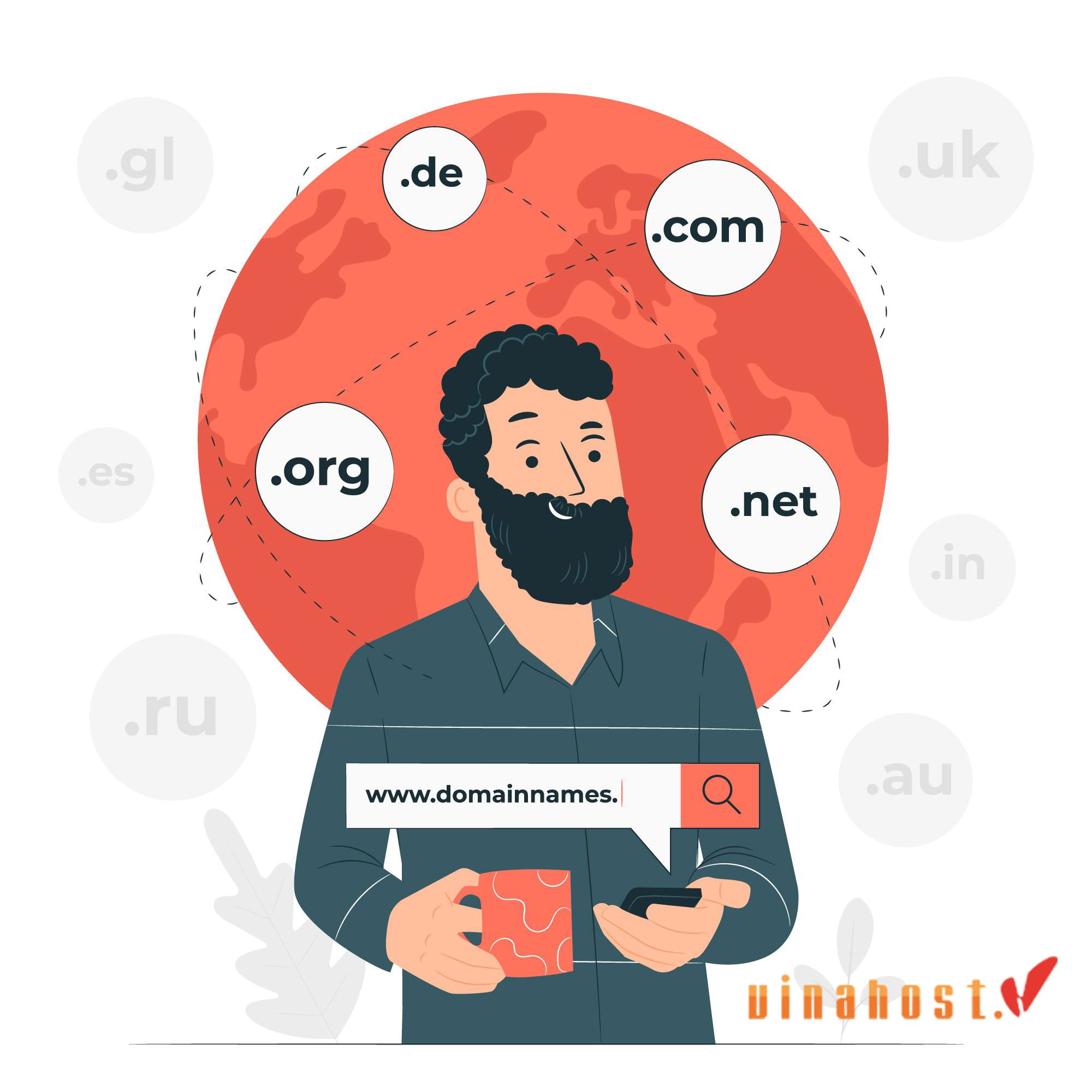
Also Read: What is a Subdomain? Exploring the Difference Between Domains & Subdomains
5. Domain Name Registration Process
5.1. Finding a Reliable Registrar
Finding a reliable domain registrar is an essential step in the domain name registration process to ensure smooth management of your domain and reliable service. Here’s how to find a trustworthy registrar:
- Check Accreditation: Look for domain registrars that are accredited by the Internet Corporation for Assigned Names and Numbers (ICANN). Accreditation indicates that the registrar has met certain standards and requirements for domain registration services.
- Read Reviews: Research registrar options online and read reviews from other customers to gauge their reputation and reliability. Look for feedback on factors such as customer support, ease of use, pricing transparency, and uptime reliability.
- Compare Pricing: Compare pricing plans and fee structures among different registrars to ensure competitive rates. Be wary of registrars offering unusually low prices, as they may have hidden fees or lack essential features and support.
- Evaluate Features: Consider the features and services offered by each registrar, such as domain management tools, DNS management, WHOIS privacy protection, email forwarding, and website hosting options. Choose a registrar that offers the features you need for your website.
- Customer Support: Assess the quality and availability of customer support provided by the registrar. Look for registrars that offer responsive customer support through various channels, such as phone, email, live chat, and support tickets.
- Security Measures: Verify the security measures implemented by the registrar to protect your domain and personal information. Look for features like two-factor authentication, SSL encryption, and domain locking to safeguard your account from unauthorized access and domain hijacking.
- Terms of Service: Read and understand the registrar’s terms of service, including their registration agreement, privacy policy, and refund policy. Pay attention to any restrictions or limitations that may affect your use of the domain or your ability to transfer it to another registrar.
- Additional Services: Consider whether the registrar offers additional services or value-added features, such as website builders, SSL certificates, email hosting, or marketing tools. These services can add convenience and functionality to your online presence.
- Domain Transfer Policy: Review the registrar’s domain transfer policy to ensure flexibility and ease of transferring your domain to another registrar if needed. Avoid registrars with restrictive transfer policies or excessive transfer fees.
- Reputation and Longevity: Choose a registrar with a solid reputation and a track record of reliability and longevity in the industry. Established registrars with years of experience are more likely to provide stable and trustworthy service.
5.2. Checking Domain Availability
Checking domain availability is the crucial first step in the domain name registration process. Here’s how to check if a domain name is available:
- Choose a Domain Registrar: Select a reputable domain registrar where you’ll check the availability of your desired domain name. Popular registrars include GoDaddy, Namecheap, Google Domains, and others.
- Visit the Registrar’s Website: Go to the website of your chosen domain registrar. Most registrars have a search bar prominently displayed on their homepage for checking domain availability.
- Enter Your Desired Domain Name: In the search bar, type the domain name you want to register. Make sure to include the desired domain extension (e.g., .com, .net, .org, .io, etc.).
- Initiate the Search: Click on the search button or press Enter to initiate the domain availability check. The registrar’s system will query its database to determine if the domain name you entered is available for registration.
- Review the Results: The search results will indicate whether the domain name is available or already registered. If the domain is available, you’ll typically see a message stating “Available” or “Congratulations, your domain is available!” If the domain is already taken, you’ll see a message indicating that it’s unavailable, along with suggestions for alternative domain names.
- Consider Alternative Extensions: If your desired domain name is not available with your preferred extension, the registrar may suggest alternative extensions that are available. Consider whether one of these alternative extensions would be acceptable for your needs.
- Refine Your Search: If the domain name you want is not available, you can refine your search by trying different variations or combinations of words. You can also consider adding hyphens, changing the word order, or using synonyms to find an available domain name that still meets your requirements.
- Check Availability Across Multiple Registrars: For added assurance, you can check the availability of your desired domain name across multiple registrars. While domain availability generally remains consistent across registrars, it’s possible that a domain may be available with one registrar but already taken with another.
- Finalize Your Selection: Once you’ve found an available domain name that meets your criteria, proceed with the domain registration process through your chosen registrar. Follow the prompts to complete the registration, provide your contact and payment information, and confirm your purchase.
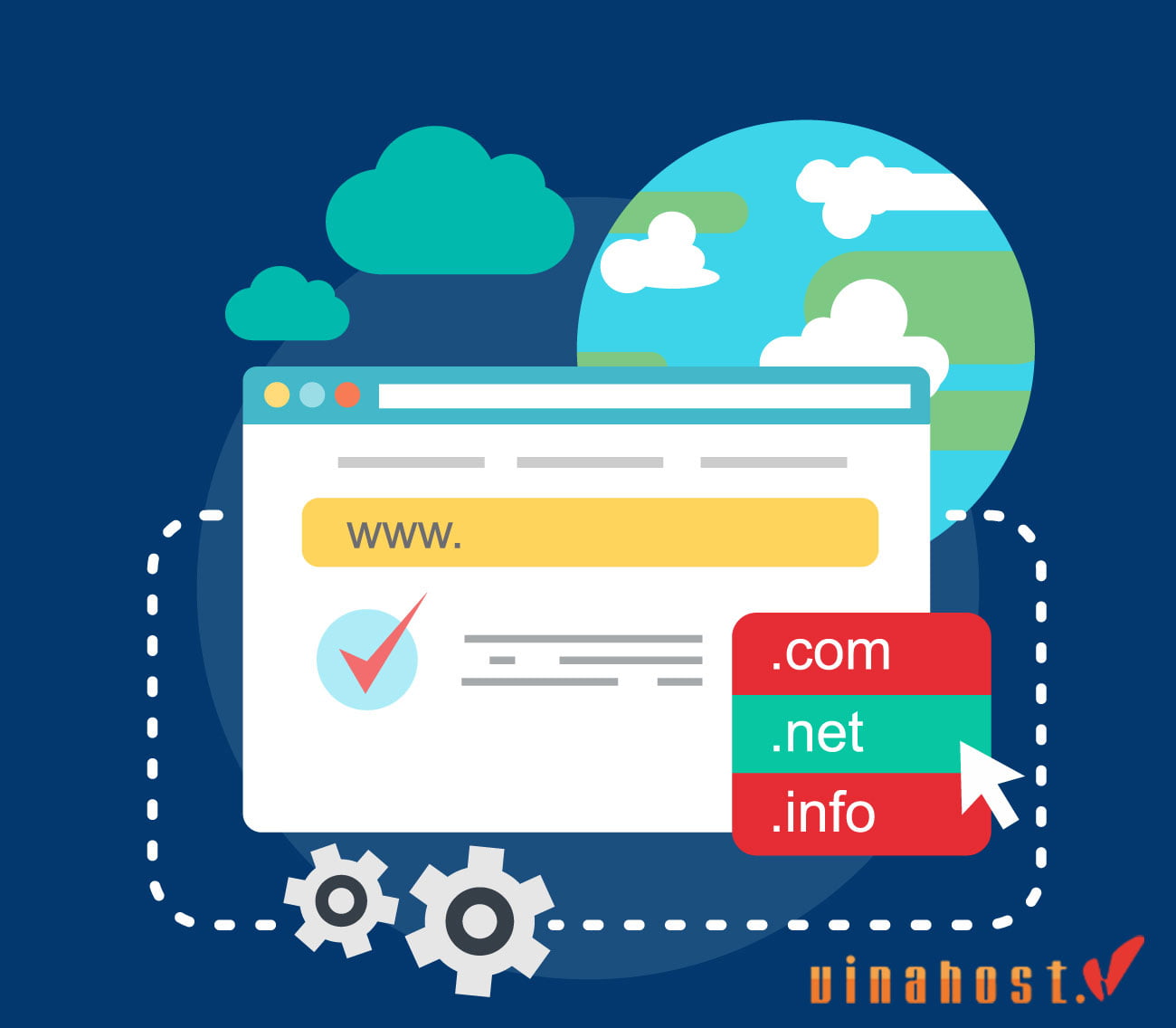
5.3. Registering the Domain
Registering a domain name involves several steps to complete the registration process with a domain registrar. Here’s a guide on how to register a domain name:
- Choose a Domain Registrar: Select a reputable domain registrar from which to register your domain name. Consider factors such as pricing, features, customer support, and user reviews when choosing a registrar.
- Search for Domain Availability: Use the registrar’s domain search tool to check the availability of your desired domain name. Enter the domain name you want to register, including the desired domain extension (e.g., .com, .net, .org).
- Select Your Domain: If the domain name you want is available, proceed to add it to your cart. If it’s not available, consider alternative domain name options or try different variations until you find an available domain name that meets your needs.
- Provide Contact Information: During the registration process, you’ll need to provide your contact information, including your name, address, email address, and phone number. This information is required for domain registration and is used to create your account with the registrar.
- Choose a Registration Period: Select the registration period for your domain name. Registrars typically offer registration periods ranging from one to ten years. Choose the registration period that best suits your needs and budget.
- Add Extra Services (Optional): Some registrars offer additional services or add-ons, such as domain privacy protection, email hosting, website builders, SSL certificates, and domain forwarding. Decide if you want to add any of these extras to your domain registration package.
- Review and Confirm Your Order: Review the details of your domain registration order, including the domain name, registration period, pricing, and any additional services you’ve selected. Make sure all the information is accurate before proceeding to checkout.
- Complete the Payment: Provide your payment information to complete the registration process. Most registrars accept various payment methods, including credit/debit cards, PayPal, and other online payment options. Follow the prompts to submit your payment securely.
- Verify Your Contact Information: After completing the payment, you may need to verify your contact information by clicking on a verification link sent to the email address you provided during registration. This step helps ensure the accuracy of your contact details.
- Receive Confirmation: Once your domain registration is successful, you’ll receive a confirmation email from the registrar. This email will contain important information about your domain, including registration details, expiration date, and login credentials for managing your domain.
- Manage Your Domain: Use the registrar’s domain management tools to configure DNS settings, set up email accounts, enable domain privacy protection, and make any other necessary changes to your domain settings.
Also Read: What is Transfer Domain? & How to Transfer a Domain?
6. Domain Name Valuation
6.1. Factors Affecting Domain Value
Here are the key factors affecting domain value:
- Domain Extension: The domain extension, or top-level domain (TLD), can significantly impact domain value. Generally, .com domains tend to have higher domain’s value due to their widespread recognition and popularity. Other popular TLDs include .net, .org, and country-code TLDs like .uk, .de, and .ca.
- Keywords and Relevance: The presence of relevant keywords in the domain name can enhance its value, especially if the keywords are highly searched or relevant to a specific industry or niche. Domain names containing popular keywords or phrases may attract more organic traffic and be more desirable to buyers.
- Brandability: Brandable domain names that are easy to remember, pronounce, and spell tend to have higher value. Unique and catchy domain names that evoke positive associations or reflect a strong brand identity are more likely to attract interest from buyers.
- Length: Shorter domain names are generally more valuable than longer ones. Short, concise domain names are easier to type, remember, and brand. However, exceptionally short domain names (e.g., 1-3 characters) may command exceptionally high prices due to their scarcity.
- Memorability: Memorable domain names are more valuable because they are easier for users to recall and share with others. Domain names that stand out and leave a lasting impression are more likely to attract traffic and contribute to brand recognition.
- Traffic and History: Domains with existing traffic and a history of usage, particularly if they have a positive reputation and backlink profile, tend to have higher domain’s value. Established domains with consistent traffic and revenue streams may command premium prices due to their revenue-generating potential.
- SEO Metrics: Factors such as domain age, backlink profile, domain authority, and search engine rankings can influence domain value. Domains with strong SEO metrics are more likely to rank well in search engine results pages (SERPs) and attract organic traffic, making them more valuable to buyers.
- Market Demand: The overall demand for domain names, including factors such as industry trends, buyer preferences, and economic conditions, can impact domain value. Domains related to popular trends, emerging technologies, or lucrative industries may command higher prices due to increased demand.
- Comparable Sales: Analyzing comparable domain sales (comps) can provide insights into market trends and help assess the domain’s value. Recent sales of similar domains can serve as benchmarks for pricing and valuation purposes.
- Legal Considerations: Domain names that are free of trademark issues and legal disputes are generally more valuable. Avoiding trademark infringement and ensuring that the domain name has a clear ownership history can enhance its marketability and value.
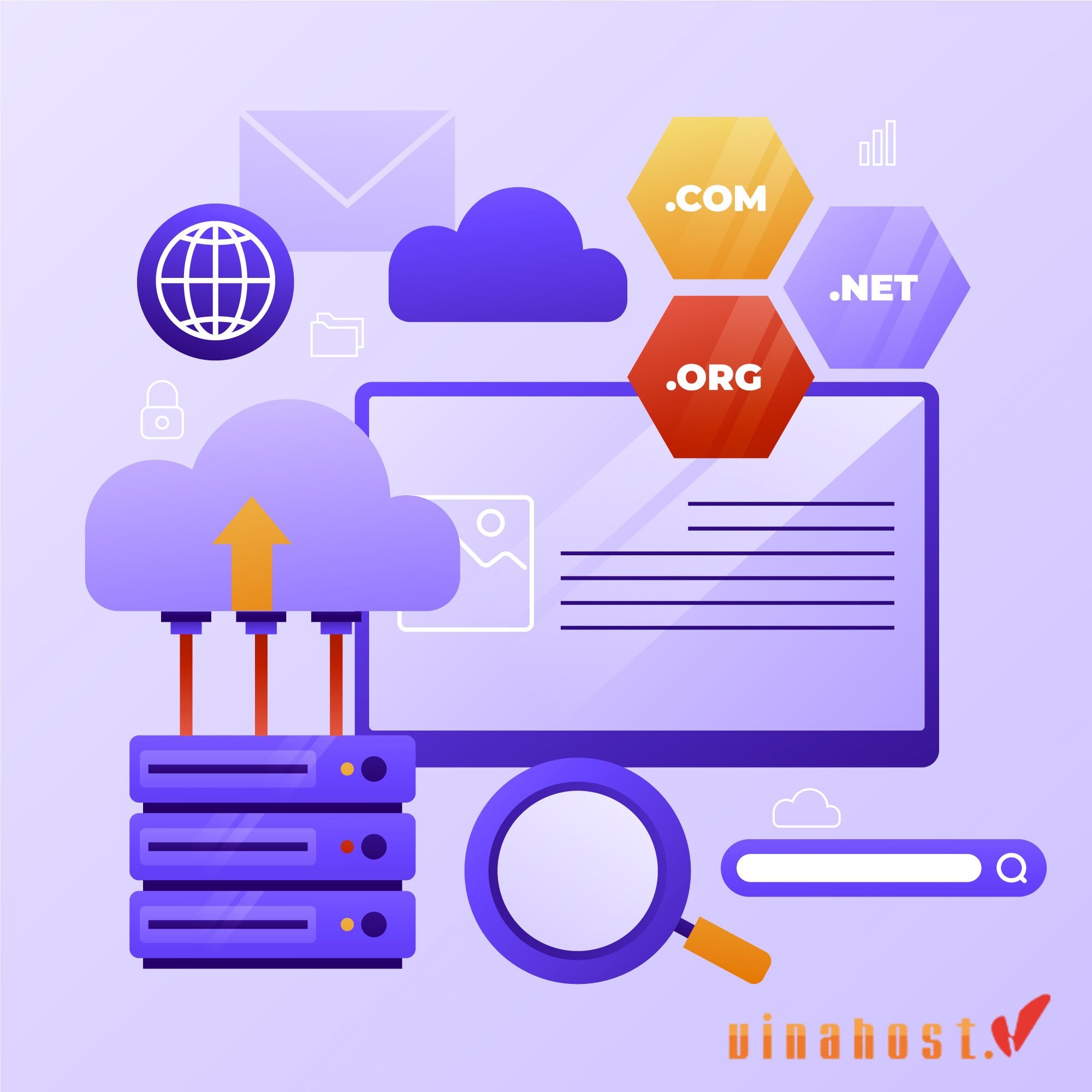
6.2. Appraising Domain Names
Appraising domain names involves determining their domain’s value based on various factors such as market demand, keyword relevance, brandability, and historical sales data. While domain valuation is subjective and can vary depending on individual perspectives and market conditions, there are several approaches and methodologies commonly used to appraise domain names:
- Comparable Sales (Comps): Analyzing recent sales of comparable domain names (similar in terms of keyword relevance, extension, length, and industry) provides insights into market trends and helps establish a baseline for valuation. Comparable sales data is often used to assess the fair market domain’s value.
- Keyword Metrics: Assessing the popularity and search volume of keywords included in the domain name can help gauge its potential domain’s value. Tools like Google Keyword Planner, SEMrush, and Moz Keyword Explorer provide valuable data on keyword search volume, competition, and cost-per-click (CPC), which can inform domain valuation.
- Brandability and Memorability: Domain names that are brandable, memorable, and easy to pronounce tend to have higher domain’s value. Factors such as uniqueness, clarity, and distinctiveness contribute to brandability and can influence appraisal outcomes.
- Traffic and Revenue: Domains with existing traffic and revenue streams, particularly if they are monetized through advertising, affiliate marketing, or e-commerce sales, may command higher valuations. Analyzing website analytics, revenue reports, and traffic sources helps assess the revenue-generating potential of a domain.
- Domain Metrics: Evaluating domain-specific metrics such as domain age, backlink profile, domain authority (DA), page authority (PA), and search engine rankings can provide insights into the domain’s overall quality and SEO value. Domains with strong metrics typically have higher appraisal domain’s value.
- Market Demand and Trends: Consideration of current market demand, industry trends, and buyer preferences is essential in domain appraisal. Domains related to popular niches, emerging technologies, or high-growth industries may have increased demand and higher valuation.
- Legal Considerations: Ensuring that the domain name is free of trademark issues, legal disputes, or copyright infringements is crucial in domain appraisal. Domains with clear ownership history and no legal encumbrances typically have higher appraisal domain’s value.
- Expert Opinion: Seeking the advice of domain industry professionals, experienced domain brokers, or domain appraisal services can provide valuable insights and expertise in assessing domain value. Experts can offer objective evaluations based on their knowledge of market trends and industry standards.
- Buyer Perception: Ultimately, domain value is subjective and depends on the perceived worth of the domain to potential buyers. Factors such as buyer motivations, preferences, and budget constraints can influence appraisal outcomes.
6.3. Selling or Auctioning Domains
Selling or auctioning domains involves marketing domain names to potential buyers and facilitating the transaction process to secure a sale at a fair price. Here’s how to sell or auction domains effectively:
- Set a Realistic Price: Determine the value of domain name based on factors such as keyword relevance, brandability, market demand, and comparable sales data. Set a realistic asking price that reflects the domain’s worth and appeals to potential buyers.
- Create a Sales Listing: Create a detailed sales listing for your domain name, highlighting its key features, benefits, and potential uses. Include relevant keywords, domain metrics, and any additional information that may attract buyers. Use clear, concise language and high-quality images to enhance the listing’s appeal.
- Choose a Sales Platform: Select a suitable sales platform for listing your domain name. Popular options include domain marketplaces like Sedo, GoDaddy Auctions, Afternic, and Flippa, as well as specialized domain brokerage services and online forums.
- Promote Your Listing: Promote your domain listing through various channels to reach a wider audience of potential buyers. Utilize social media, email marketing, online forums, and industry networks to raise awareness and drive traffic to your listing.
- Engage with Interested Buyers: Respond promptly to inquiries from potential buyers and provide them with additional information, clarifications, or negotiation terms as needed. Engage in constructive dialogue and address any concerns or objections to facilitate the sales process.
- Consider Auctions: Consider auctioning your domain name to generate interest and competitive bidding among potential buyers. Participate in domain auctions hosted by reputable platforms or organize a private auction to attract qualified buyers and maximize sale potential.
- Negotiate Terms: Negotiate the terms of the sale with interested buyers to reach a mutually beneficial agreement. Be flexible and open to compromise while ensuring that the terms align with your selling objectives and preferences.
- Finalize the Sale: Once you’ve reached an agreement with a buyer, finalize the sale by preparing a sales agreement or purchase agreement outlining the terms and conditions of the transaction. Use a secure payment method and ensure that both parties fulfill their respective obligations to complete the sale successfully.
- Transfer Ownership: Transfer ownership of the domain name to the buyer by initiating a domain transfer process through your registrar. Follow the registrar’s guidelines and provide the necessary authorization codes or transfer instructions to facilitate a smooth transfer of ownership.
- Provide Post-Sale Support: Offer post-sale support to the buyer, such as assistance with domain transfer, DNS setup, and integration with hosting services. Ensure a positive buying experience to build trust and reputation as a domain seller.
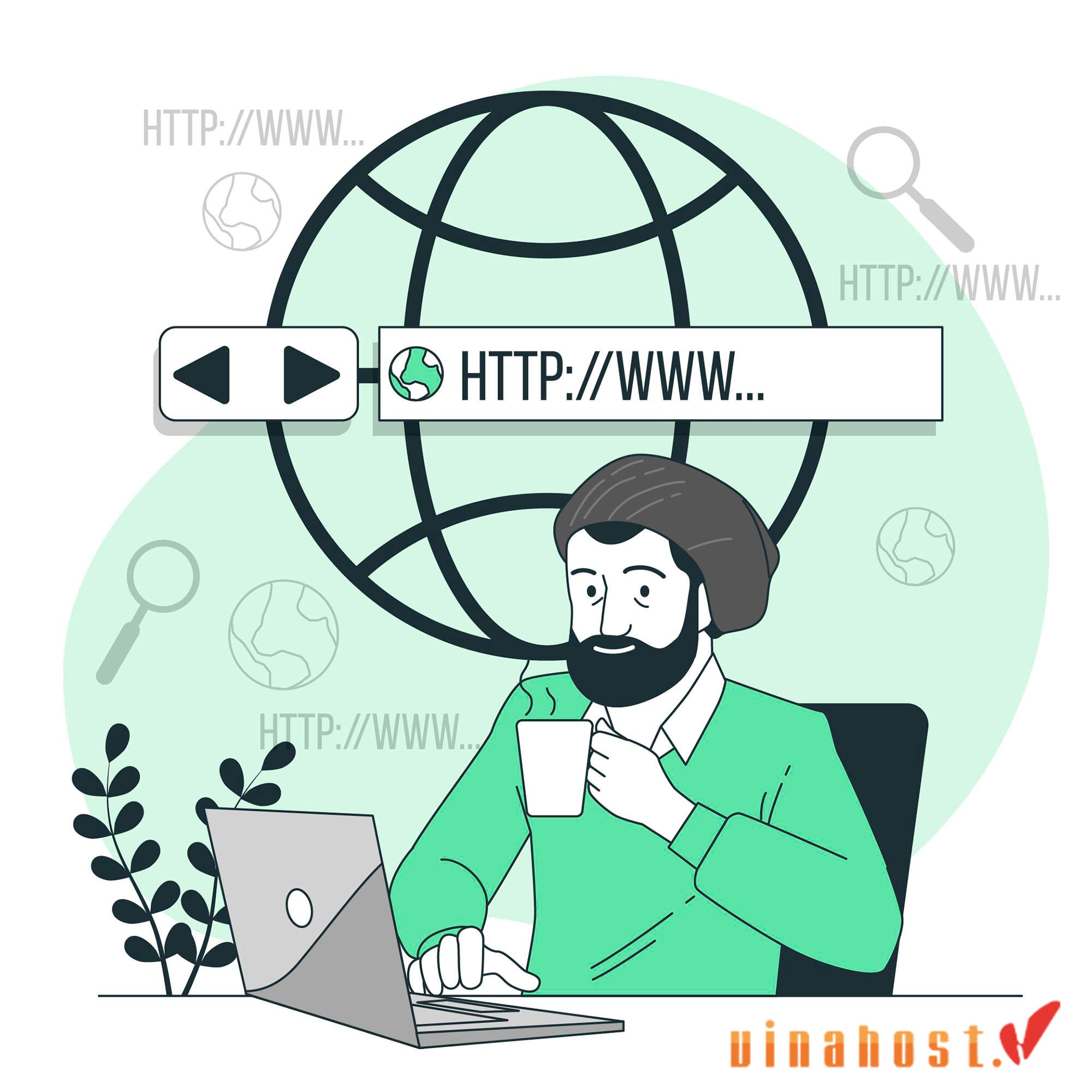
Also Read: What is HTTPS? The Secure Gateway to a Safer Internet
7. FAQs
7.1. What is a domain value example?
Imagine you own the domain name “GamingZone.com”. Here’s how you might determine its domain’s value:
- Keyword Relevance: “Gaming” is a highly relevant and popular keyword, especially in the context of online gaming, esports, and gaming communities. The keyword “Zone” adds a sense of exclusivity or specialization. As such, the domain name “GamingZone.com” is likely to be highly desirable to individuals or businesses operating in the gaming industry.
- Brandability: “GamingZone.com” is brandable and easy to remember. It conveys a clear message about the website’s focus on gaming-related content or services. The domain name has the potential to become a recognizable brand within the gaming community.
- Market Demand: The gaming industry is vast and continues to grow rapidly, with millions of gamers worldwide seeking information, entertainment, and products related to gaming. As such, domain names related to gaming are in high demand, and “GamingZone.com” is likely to attract interest from potential buyers.
- Comparable Sales: If you research comparable domain sales, you might find that domain names similar to “GamingZone.com”, such as “GameZone.com” or “GamingHub.com”, have sold for significant amounts in the past. This information can provide insights into the potential domain’s value of “GamingZone.com”.
Based on these factors and considering the current market conditions, you might estimate domain’s value of “GamingZone.com” to be in the range of several thousand to tens of thousands of dollars. However, the actual value would depend on factors such as the specific buyer’s preferences, budget, and perceived value of the domain name. Additionally, working with a professional domain appraiser or utilizing domain valuation tools can provide a more accurate assessment of the domain’s value.
7.2. Are premium domain names worth the investment?
Whether premium domain names are worth the investment depends on various factors, including the specific domain name, its potential value, and your individual circumstances and objectives. Here are some considerations to help you determine if investing in premium domain names is worthwhile:
- Brand Recognition: Premium domain names, especially those with short, memorable, and brandable keywords, can enhance brand recognition and credibility. They are easier to remember, type, and share, which can contribute to increased visibility and customer trust.
- SEO Benefits: Premium domain names may offer SEO benefits by incorporating relevant keywords and improving search engine rankings. Search engines like Google tend to favor domains with keywords in the URL, potentially boosting organic traffic and visibility.
- Market Demand: Premium domain names are often in high demand due to their perceived value and brand-building potential. Investing in a premium domain name with strong market demand can lead to lucrative resale opportunities and a high return on investment (ROI).
- Investment Potential: Premium domain names are considered valuable digital assets that can appreciate over time. They have the potential to increase in domain’s value as the internet grows and demand for memorable, brandable domain names continues to rise.
- Industry Relevance: Consider the relevance of the domain name to your industry or niche. Premium domain names that align closely with your business or target audience are more likely to yield positive results and justify the investment.
- Budget Considerations: Assess your budget and financial resources to determine if investing in a premium domain name aligns with your investment goals and risk tolerance. Premium domain names can command significant prices, so it’s essential to evaluate the potential ROI and affordability of the investment.
- Long-Term Strategy: Consider your long-term strategy and objectives for the domain name investment. Are you looking to build a brand, drive traffic, or flip the domain for profit? Clarifying your goals can help you make informed decisions about which premium domain names to invest in and how to maximize domain’s value.
- Due Diligence: Conduct thorough research and due diligence before investing in a premium domain name. Evaluate factors such as domain history, previous sales data, trademark issues, and market trends to assess the domain’s value and potential risks.
7.2. How can I protect my brand with domain names?
Protecting your brand with domain names involves several strategies to safeguard your brand identity, reputation, and intellectual property rights. Here are some steps you can take to protect your brand with domain names:
- Register Relevant Domain Names: Secure domain names that are variations or misspellings of your brand name, as well as domain names with common extensions (.com, .net, .org) and country-code extensions (.us, .uk, .ca) relevant to your target markets. This prevents others from registering similar domain names and potentially diluting your brand.
- Monitor Domain Registrations: Regularly monitor domain registrations to identify any unauthorized registrations of domain names that infringe on your brand. Use domain monitoring tools and services to track new domain registrations containing your brand name or trademarks.
- Enforce Trademark Rights: Register your brand name and trademarks with relevant intellectual property authorities (e.g., United States Patent and Trademark Office, European Union Intellectual Property Office) to establish legal protection and enforcement rights. Enforce your trademark rights against unauthorized use of your brand name in domain names through legal means if necessary.
- Implement Domain Name Policies: Establish clear policies and guidelines for the registration and use of domain names related to your brand. Clearly communicate these policies to employees, partners, and stakeholders to ensure compliance and prevent misuse of your brand name in domain registrations.
- Utilize Domain Monitoring Services: Use domain monitoring services and brand protection tools to monitor domain registrations, detect potential infringements, and take timely action to address unauthorized use of your brand name in domain names.
- Secure Domain Renewals: Ensure that domain registrations are renewed promptly to prevent domain expiration and potential loss of control over your brand’s online presence. Maintain up-to-date contact information and payment details to receive renewal notices and complete renewals on time.
- Employ Domain Privacy Protection: Enable domain privacy protection services to conceal personal contact information associated with domain registrations and protect against domain hijacking, spam, and identity theft.
- File Defensive Domain Registrations: Proactively register defensive domain names to preemptively block potential infringers from registering domain names that could harm your brand. Register variations, misspellings, and common extensions of your brand name to protect against brand abuse.
- Monitor Online Presence: Regularly monitor online platforms, social media networks, and search engine results for mentions of your brand name, domain names, and trademarks. Respond promptly to any instances of brand misuse or infringement to mitigate potential damage to your brand reputation.

7.3. How can I determine the value of my domain name?
Determining the value of domain name involves assessing various factors that contribute to its worth in the market. While domain valuation is subjective and can vary depending on individual perspectives and market conditions, here are some steps to help you determine the domain’s value.:
- Evaluate Domain Keywords: Assess the relevance and popularity of keywords included in the domain name. Consider factors such as search volume, competition, and commercial value of the keywords. Domain names containing highly searched or valuable keywords may command higher domain’s value.
- Analyze Domain Extension: Consider the extension of the domain name (e.g., .com, .net, .org) and its impact on domain’s value. Generally, .com domains are more valuable due to their widespread recognition and popularity. Other factors to consider include the availability and demand for the specific extension.
- Assess Brandability: Evaluate the brandability and memorability of the domain name. Brandable domain names that are easy to remember, pronounce, and spell tend to have higher domain’s value. Unique, catchy, and distinct domain names are more likely to resonate with users and attract interest from buyers.
- Research Comparable Sales: Look for comparable domain sales (comps) to gather insights into market trends and pricing benchmarks. Analyze recent sales of similar domain names in terms of keyword relevance, extension, length, and industry to estimate the domain’s value.
- Consider Domain Metrics: Review domain-specific metrics such as domain age, backlink profile, domain authority (DA), page authority (PA), and search engine rankings. Strong domain metrics can indicate the quality and SEO value of the domain, which may influence its valuation.
- Evaluate Market Demand: Assess the current market demand for domain names related to your industry, niche, or target audience. Consider factors such as industry trends, buyer preferences, and economic conditions to gauge the demand for your domain name.
- Seek Expert Opinion: Consider seeking the advice of domain industry professionals, experienced domain brokers, or domain appraisal services to obtain expert opinion and guidance on domain valuation. Professionals can offer objective evaluations based on their knowledge of market dynamics and industry standards.
- Use Domain Valuation Tools: Utilize domain valuation tools and online resources to obtain automated estimates of your domain’s value. While these tools may provide a rough estimate, they can serve as a starting point for further analysis and consideration.
- Assess Brand Potential: Evaluate the potential brand-building opportunities and marketing value associated with the domain name. Consider how the domain name aligns with your business objectives, target audience, and branding strategy to assess its domain’s value as a brand asset.
- Consider Buyer Perspective: Put yourself in the shoes of potential buyers and consider what they would be willing to pay for the domain name. Factor in considerations such as market demand, branding potential, and return on investment (ROI) to determine a fair asking price.
7.4. Can I sell my domain name if I no longer need it?
Yes, you can sell your domain name if you no longer need it. Selling a domain name can be a straightforward process, and there are several options available to facilitate the sale:
- Domain Marketplaces: There are numerous online domain marketplaces where you can list your domain name for sale. Popular marketplaces include Sedo, GoDaddy Auctions, Afternic, Flippa, and Namecheap Marketplace. These platforms allow you to create listings for your domain name, set an asking price, and connect with potential buyers.
- Domain Brokers: If you prefer to have a professional handle the sale of your domain name, you can work with a domain broker or brokerage service. Domain brokers have experience and expertise in negotiating domain sales and can help you find qualified buyers and secure the best possible price for your domain name. Keep in mind that domain brokers typically charge a commission or fee for their services.
- Private Sales: You can also sell your domain name privately by reaching out to potential buyers directly. This approach may involve researching companies or individuals who may be interested in your domain name and contacting them to propose a sale. Private sales can sometimes result in higher sale prices, as there are no intermediary fees involved.
- Auctions: Participating in domain auctions is another option for selling your domain name. You can list your domain name in online auctions hosted by domain marketplaces or auction platforms. Auctions can generate interest and competitive bidding among potential buyers, potentially leading to a higher sale price for your domain name.
- Social Media and Forums: Utilize social media platforms, online forums, and domain-related communities to promote your domain name for sale. Join domain name forums and groups where buyers and sellers interact, and share your listing with members who may be interested in purchasing your domain name.
- Domain Parking Services: If you’re not actively using your domain name, you can park it with domain parking services that display ads on the domain’s landing page. Some domain parking services offer the option to list your domain name for sale to interested buyers who visit the landing page.
Before selling your domain name, it’s essential to research its domain’s value., set a realistic asking price, and prepare a compelling sales listing with relevant information about the domain. Be transparent about the domain’s history, traffic, and any potential issues to build trust with potential buyers. Additionally, consider the terms of the sale, including payment methods, transfer process, and any legal considerations, to ensure a smooth and successful transaction.
7.5. How often should I monitor my domain name for unauthorized changes?
It’s advisable to monitor your domain name regularly for unauthorized changes to ensure the security and integrity of your online presence. While the frequency of monitoring may vary depending on factors such as the importance of the domain, the level of security measures in place, and your level of concern about potential threats, here are some general recommendations:
- Regular Checkups: Perform regular checkups on your domain name at least once every few months, if not more frequently. This allows you to stay vigilant and catch any unauthorized changes or suspicious activities early on.
- Critical Times: Monitor your domain name more closely during critical times or events, such as launching a new website, updating DNS settings, or renewing the domain registration. These are instances when your domain may be more vulnerable to unauthorized changes or hijacking attempts.
- Set Alerts: Use domain monitoring and alert services provided by domain registrars or third-party providers. These services can notify you via email or text message of any changes to your domain registration, DNS settings, or WHOIS information, allowing you to take immediate action if necessary.
- Keep Contact Information Updated: Ensure that your contact information, including email addresses and phone numbers associated with your domain registration, is accurate and up to date. This ensures that you receive timely notifications of any changes or renewal reminders from your registrar.
- Monitor DNS Activity: Monitor DNS activity and changes to your domain’s DNS records using tools and services provided by your domain registrar or third-party DNS management platforms. Look for any unauthorized modifications or suspicious activity that could indicate a security breach.
- Stay Informed: Stay informed about common domain hijacking techniques, security threats, and best practices for domain security. Regularly review security resources, industry news, and updates from your domain registrar to stay ahead of potential threats and protect your domain name effectively.
Also Read: What is DNS Record: The Key to Unlocking the Internet
8. Conclusion
In conclusion, the value of domain names extends far beyond mere web addresses in today’s digital landscape. As virtual real estate, domain names hold immense potential for businesses, entrepreneurs, and individuals alike. Their significance lies not only in facilitating online navigation but also in branding, marketing, and establishing credibility in the vast expanse of the internet. You can see more articles from VinaHost HERE or contact us if you need advice on services:
- Email: support@vinahost.vn
- Hotline: 1900 6046
- Livechat: https://livechat.vinahost.vn/chat.php
Unveiling the Web’s Hidden Foundation: What is Web Hosting?
What is VPS? | Unveiling the Power Behind Virtual Private Servers
Demystifying IP Addresses: What is an IP Address & How Does It Work?


 Tiếng Việt
Tiếng Việt English
English 简体中文
简体中文



















































































